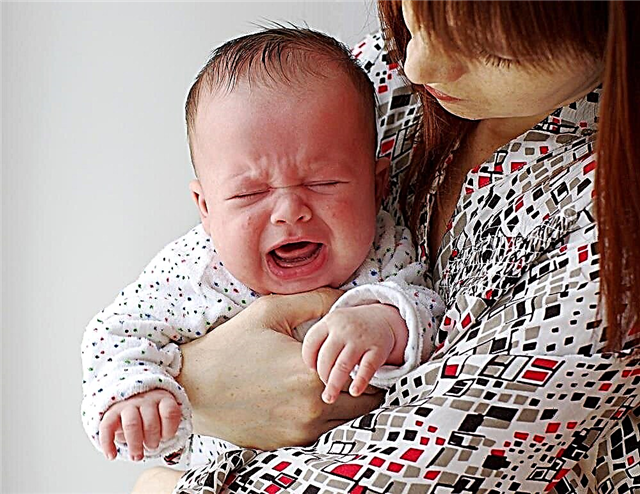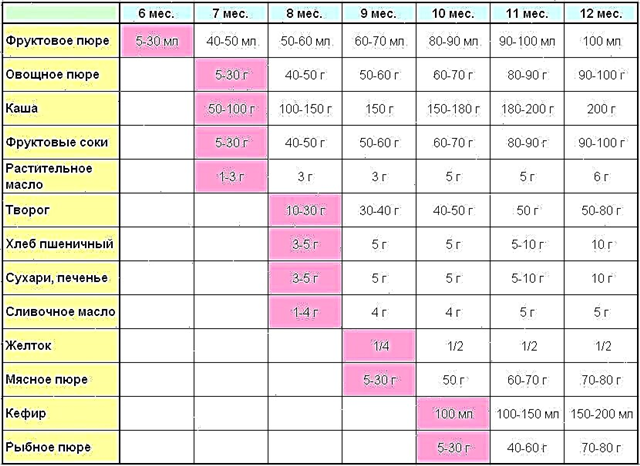Sepsis in newborns is a terrible and dangerous disease, which is not always possible to cope with. Knowing the alarming symptoms is necessary in order to react in time. With sepsis, the child should be in the hospital faster, only there his life can be saved.

Newborn
What is neonatal sepsis
Sepsis is one of the most dangerous diseases. About 30-40 percent of newborns die from it. You can save a child by noticing the symptoms of the disease in time. The body over a short period of time affects inflammation, which provokes a bacterial or fungal infection. Among the causative agents of sepsis are streptococcus, staphylococcus, pneumococcus, salmonella. The disease begins almost immediately after the baby is born or during the first month of his life. The factors that cause it can have an effect during pregnancy, during childbirth or afterwards.
What is sepsis in newborns?
Sepsis in newborns in pediatrics differs depending on the time of its occurrence:
- Nosocomial - manifests itself in the hospital. The hospital is closed to understand what caused the disease and to exclude other infants from becoming infected.
- Early sepsis makes itself felt on the 3-5th day of the baby's life. Infection occurs in the womb or during childbirth. For example, the baby swallowed amniotic fluid in which pathogenic microorganisms lived.
- Late - begins a week after the baby is born. The child could become infected both during the passage of the birth canal and after being discharged from the hospital.
The classification of sepsis is also based on the rate at which it develops. So, it can manifest itself with lightning speed, when the symptoms are noticeable already on the first day, be acute and last 3-6 weeks, subacute, lasting 1.5-3 months. For a child, it is most dangerous when the disease develops immediately. It is important to take urgent action here. Sepsis can be protracted, then the baby recovers in about 3 months.
Causes of sepsis in newborns
Among the factors that can lead to sepsis, the following are known:
- Infectious diseases of the mother during the period of gestation. This applies not only to gynecological pathologies, but also to problems with the digestive system, urinary system. Cystitis can lead to serious consequences, especially if it is not promptly cured. Often, it provokes kidney disease, pyelonephritis, which leads to more serious complications.
- Frequent abortions, as a result of which the tissues of the uterus are injured, are damaged, which contributes to the spread of infections.
- Intrauterine hypoxia.
- Early rupture of amniotic fluid.
- Use of non-sterile instruments by obstetricians and other medical personnel.
- Infections developing in a newborn. It can be conjunctivitis, bronchitis, pneumonia, cystitis. Pemphigus is dangerous, manifested by the formation of blisters on the skin, inside of which pus is contained.
- Birth trauma, in particular, damage to the skull.
- Damage to the skin and mucous membranes of the child.
The appearance and suppuration may begin in the area of the hemangioma. It is a formation of blood vessels on the surface of the skin. It is not considered dangerous, in surgery, removal is provided when it grows or causes inconvenience. In rare cases, hemangioma appears in the etiology of sepsis as a factor provoking the spread of infection.

Infant hemangioma
Note! The risk of developing sepsis increases in babies who are born prematurely, whose weight does not reach 2 kilograms. At risk are children born with multiple pregnancies, babies diagnosed with congenital malformations.
How sepsis manifests itself
The sooner sepsis is recognized, the more chances of keeping the child alive. The disease is manifested by symptoms:
- Unusual Behavior: Newborn is too lethargic or extremely restless;
- Poor appetite, child refuses to eat;
- Profuse regurgitation, vomiting;
- In a newborn with sepsis, the skin color is very pale, may have a grayish or yellowish tint;
- The nasolabial triangle takes on a blue tint;
- Diarrhea;
- Rapid breathing;
- Heart rhythm disorder;
- Cramps, muscle twitching;
- Changes in body temperature: it can be either very low or high;
- Purulent foci on the skin and mucous membranes. Often they appear on internal organs, even infect bones;
- Skin rashes unlike prickly heat and atopic dermatitis.

Skin rashes
Clinical manifestations differ significantly, symptoms depend on the initial lesion.
Diagnostics
The child is examined by a neonatologist. The baby must take blood to identify the causative agent of the infection. To determine the tactics of treatment, scraping from the skin, smears from the pharynx and conjunctiva are needed. Stool dysbiosis is usually tested. Doctors rule out that the child has an intrauterine infection, leukemia, mycosis. Diseases have similar symptoms, so differential diagnosis is necessary.
In order not to waste time, doctors should immediately choose a broad-spectrum antibiotic. After taking blood, it will be clear to which drugs pathogenic microorganisms are resistant, and which drug they will not be resistant to. All visible sources of infection must be eliminated, including treating lesions, abscesses. In case of tissue damage, they turn to surgical intervention, which makes it possible to get rid of purulent foci.
Treatment tactics depend on the area of inflammation, on what exactly gave rise to the infection. This can be found out by conducting additional examinations and monitoring changes in the patient's condition.
What Happens With Sepsis
The pathogenesis of sepsis begins with the fact that a focus of purulent inflammation appears in the patient's body. It serves as a source of infection. Through blood and lymph, it is delivered to tissues and organs, affecting them. As a result, their functions are disrupted.
Note! With sepsis, not only blood poisoning occurs, but blood vessels are also damaged, they become easily permeable. Because of this, the infection spreads faster, spreading throughout the body. Babies have weak immunity, and it is impossible to restrain it, to stop the action of the purulent focus.
What to do if symptoms of sepsis are detected
A child with sepsis should be hospitalized immediately. He may have to be in intensive care. He receives the first dose within an hour after the dangerous symptoms are noticed. So the chance to quickly recover and avoid disastrous consequences increases significantly.

Helping a sick baby
Prognosis and treatment
With the rapid development of sepsis, about half of newborns die. In less acute forms, the mortality rate is slightly lower.
Bacterial sepsis of a newborn is only treated with antibiotics. They are administered intravenously to achieve greater effect. After receiving the bacterial culture, the therapy is adjusted. Test results are never expected. Therapy begins instantly, you cannot waste precious minutes. This is provided for in sepsis treatment protocols based on the recommendations of experienced physicians.
The child may also need support in breathing, medications to correct pressure. In some cases, hormonal agents are used; in severe cases of the disease, blood or plasma is transfused. During treatment, it is important to increase the immunity of the baby, there are drugs that can enhance the body's defenses.
If the cause of the spread of the infection is a wound, for example, an umbilical wound, it must be treated with antibacterial agents, be sure to remove pus.
Complications and consequences
The most serious complication is septic shock. In this case, the work of all organs and systems is disrupted, blood pressure drops dramatically. Often this condition leads to death. Infants with sepsis often develop pneumonia, meningitis, and peritonitis. Among the frequent complications are abscesses and necrotic foci of a purulent nature.
Note! Only timely diagnosis and proper treatment will help to avoid the consequences, in which the ongoing changes are constantly monitored.
A recovered baby will recover for a long time in the future. Usually he is recommended a general strengthening massage, physiotherapy procedures. He is regularly monitored by a therapist and narrow specialists. In the absence of complaints, it is removed from the register upon reaching 3 years.

Child at the doctor's appointment
Sepsis in premature newborns is more common than in babies born on time. They are at risk, parents should closely monitor their health. In case of any deviations, you should immediately consult a doctor. Prevention of a serious illness begins at the time of planning pregnancy. A woman should understand that any infectious diseases can affect the health of her unborn child.



